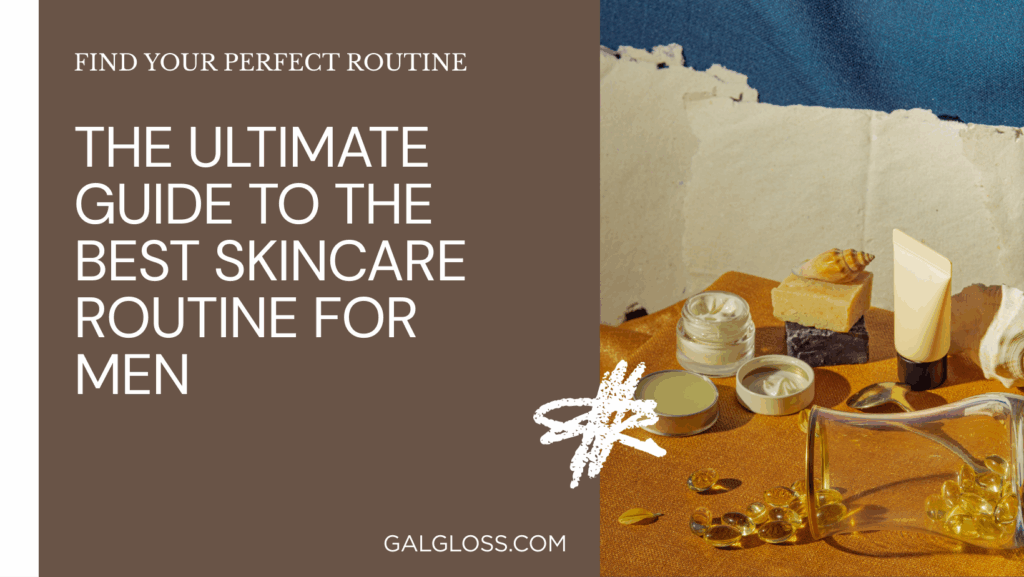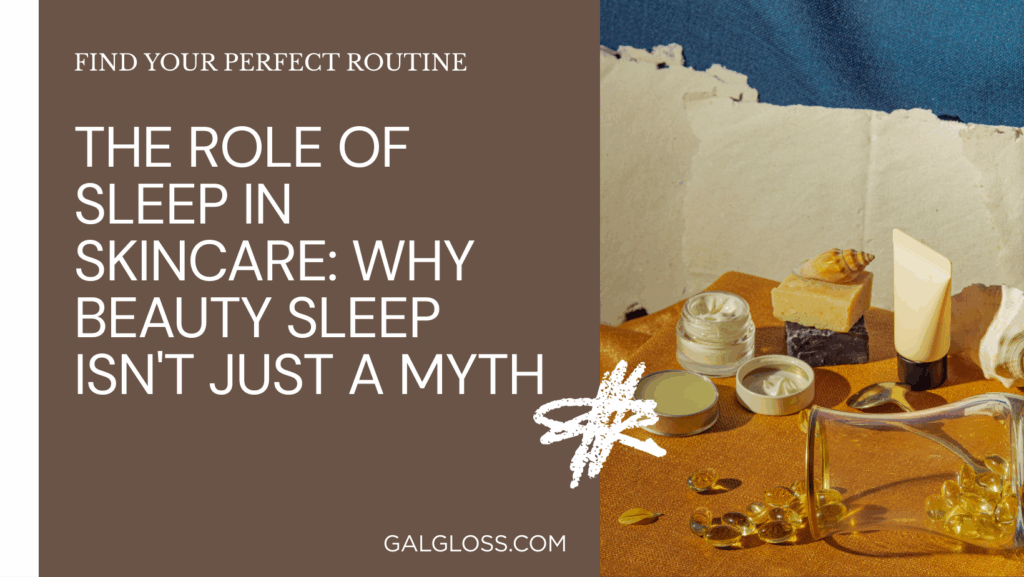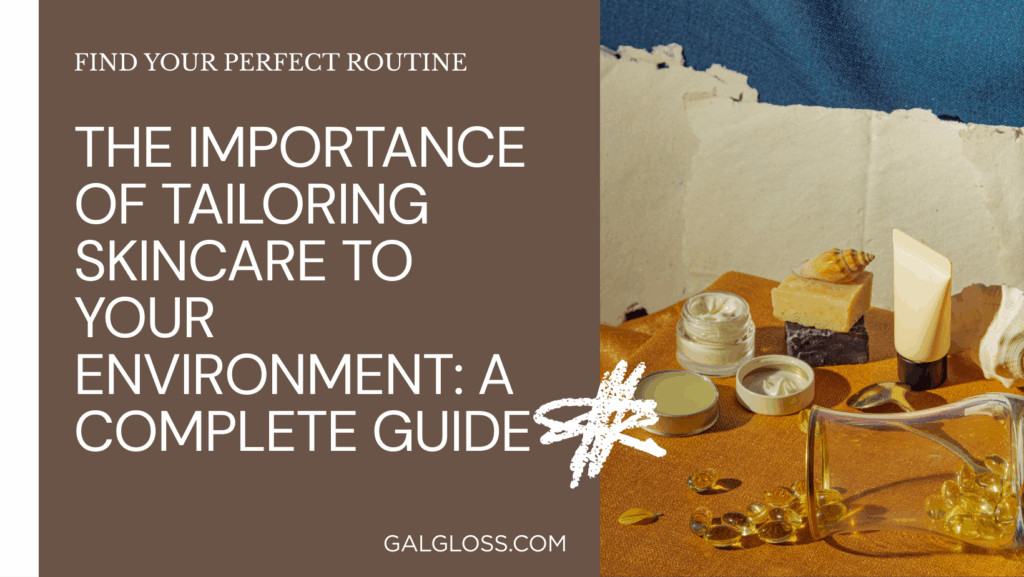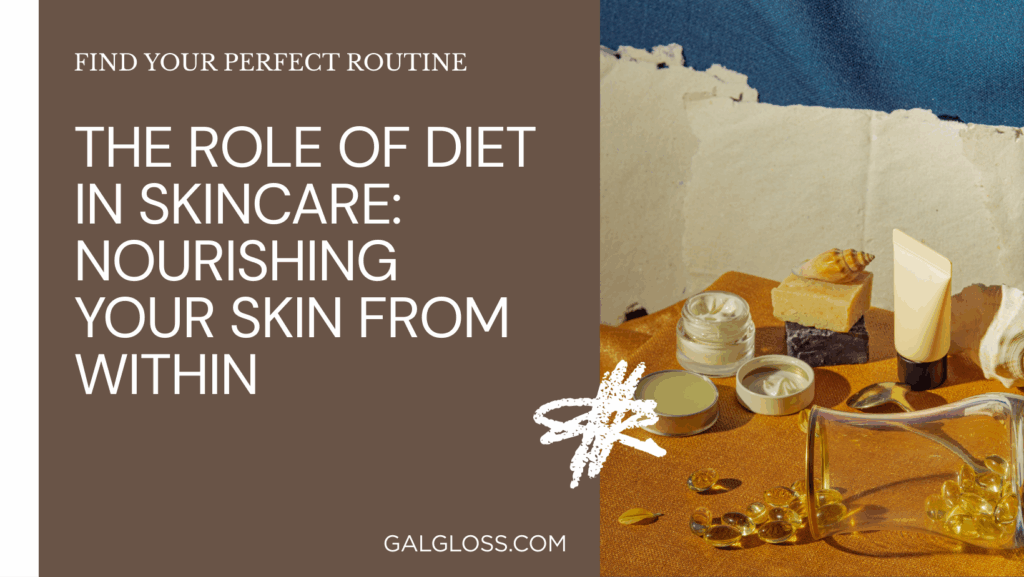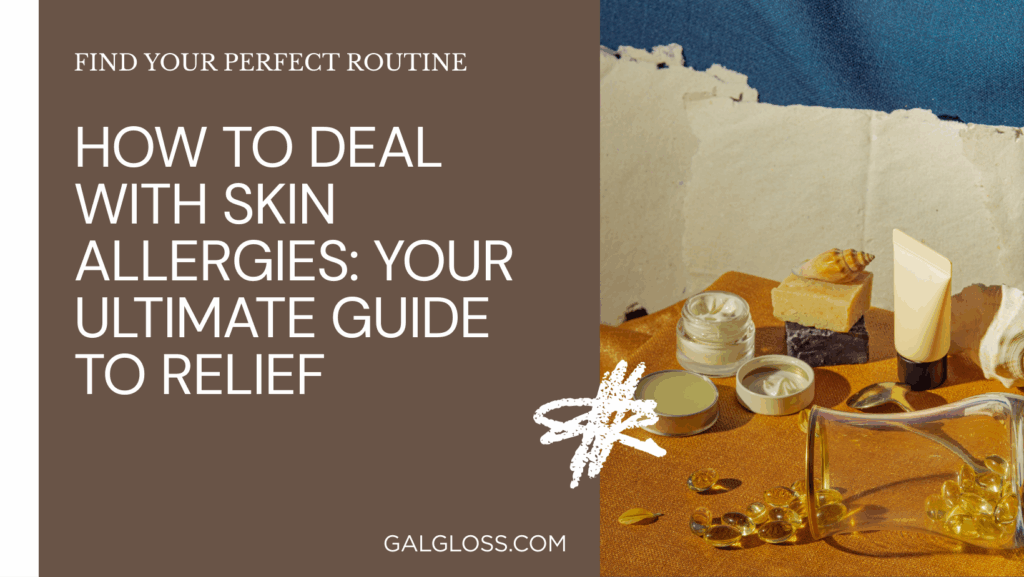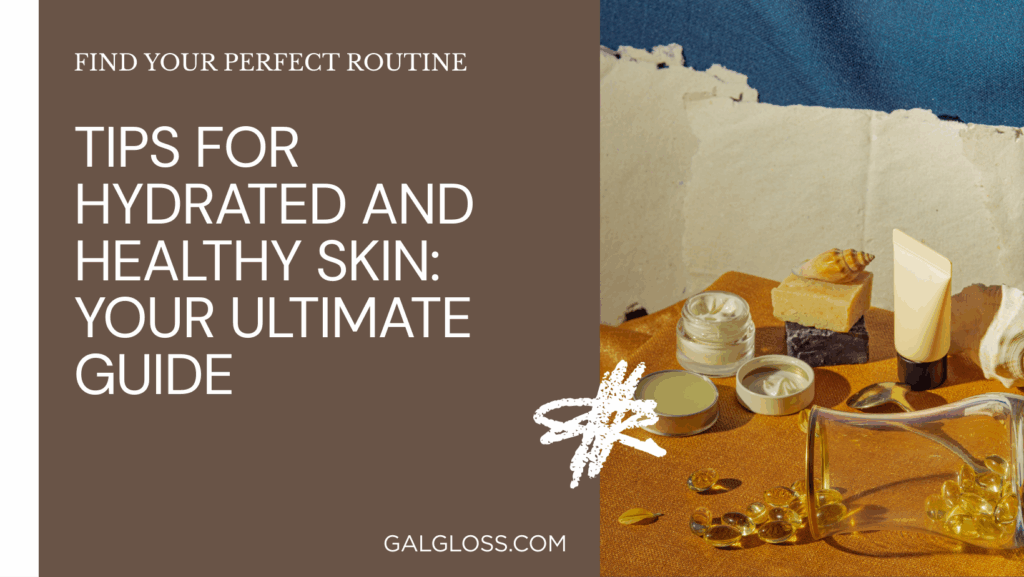Ever stood in the skincare aisle, overwhelmed by the sea of moisturisers? You’re not alone. Choosing the right moisturiser can feel like finding a needle in a haystack. But don’t worry – I’ve got your back!
Why is moisturising so crucial? Well, think of your skin as a protective shield. Without proper hydration, that shield can crack, leaving you vulnerable to all sorts of skin woes. A good moisturiser keeps your skin barrier strong, helping to lock in hydration and keep irritants out.
But here’s the rub: not all moisturisers are created equal. What works for your best friend might turn your face into an oil slick. Or that fancy cream everyone’s raving about? It could leave your skin drier than the Sahara.
So how do you navigate this moisturiser maze? That’s exactly what we’ll tackle in this guide. We’ll dive into everything from understanding your skin type to decoding those mile-long ingredient lists. By the end, you’ll be armed with the knowledge to choose the perfect moisturiser for your unique skin needs.
Ready to become a moisturiser mastermind? Let’s dive in!
Understanding Your Skin Type
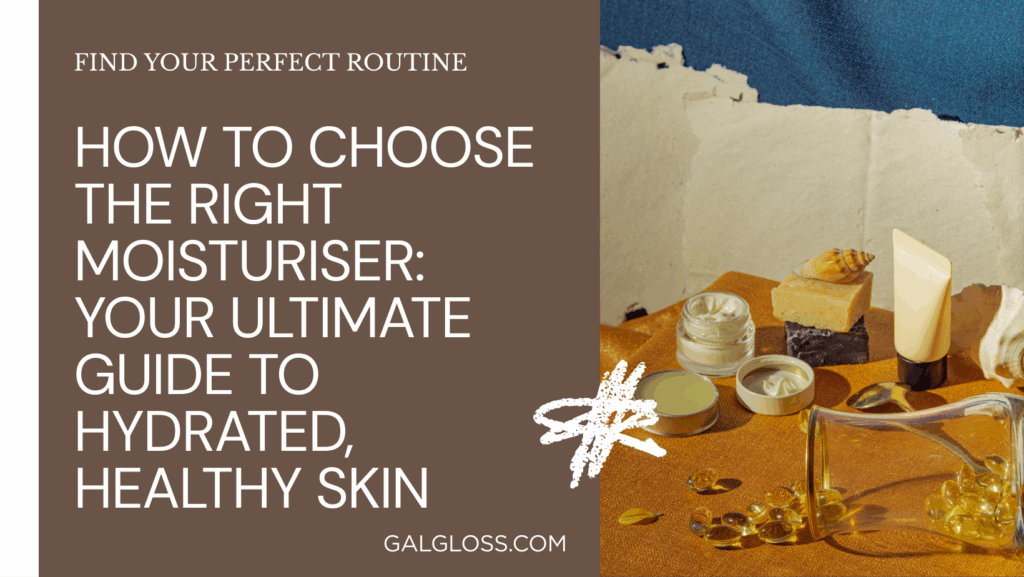
First things first: you need to know your skin type. It’s like knowing your shoe size – essential for finding the right fit. Here’s a quick rundown:
- Dry skin: Feels tight, flaky, or rough
- Oily skin: Looks shiny, prone to breakouts
- Combination skin: Oily T-zone, dry cheeks
- Sensitive skin: Easily irritated, may sting or burn
- Normal skin: Not too dry, not too oily – the Goldilocks of skin types
Not sure what you’ve got? Try the blotting paper test. Dab your face with blotting paper in the afternoon. If it’s soaked, you’re oily. If it’s barely marked, you’re dry. Somewhere in between? You’re likely a combination or normal.
Key Ingredients to Look For
Now that you know your skin type, let’s talk about ingredients. These are the building blocks of any good moisturiser:
- Humectants: Think of these as water magnets. They pull moisture from the air into your skin. Look for:
- Hyaluronic acid
- Glycerin
- Urea
- Emollients: These smooth and soften skin. They’re like filling in the cracks in dry skin. Key players include:
- Ceramides
- Fatty acids
- Squalane
- Occlusives: These create a protective layer, locking moisture in. They’re especially good for dry skin:
- Petrolatum
- Dimethicone
- Shea butter
- Antioxidants: These fight off free radicals, helping to prevent premature ageing:
- Vitamin C
- Vitamin E
- Niacinamide
Here’s a handy table to help you remember:
| Ingredient Type | Function | Examples |
| Humectants | Attract water | Hyaluronic acid, Glycerin |
| Emollients | Soften skin | Ceramides, Fatty acids |
| Occlusives | Lock in moisture | Petrolatum, Dimethicone |
| Antioxidants | Fight free radicals | Vitamin C, Vitamin E |
Moisturiser Formulations: Finding Your Perfect Match
Just like there’s more than one way to make a sandwich, there’s more than one way to formulate a moisturiser. Let’s break down the main types:
- Creams: These are the all-rounders of the moisturiser world. They’re richer than lotions but not as heavy as ointments. Great for normal to dry skin.
- Lotions: Lighter than creams, these are perfect for oily or combination skin. They hydrate without feeling greasy.
- Gels: Water-based and ultra-light, gel moisturisers are ideal for oily skin. They hydrate without clogging pores.
- Oils: Don’t let the name scare you! Face oils can be great for all skin types, even oily skin. They’re packed with nutrients and can help balance oil production.
- Ointments: These are the heavyweights of moisturisers. They’re occlusive and great for very dry or sensitive skin.
Remember, your skin’s needs might change with the seasons. You might need a lighter lotion in summer and a richer cream in winter.
Addressing Specific Skin Concerns
Got acne? Worried about wrinkles? Your moisturiser can do more than just hydrate. Here’s how to choose based on specific concerns:
- Anti-aging: Look for retinol, peptides, and antioxidants. These ingredients help boost collagen production and fight fine lines.
- Acne-prone skin: Opt for oil-free, non-comedogenic formulas. Look for salicylic acid or benzoyl peroxide to fight breakouts.
- Rosacea: Gentle, fragrance-free formulas are your friends. Look for soothing ingredients like niacinamide or aloe vera.
- Eczema: Ceramides are your best bet. They help repair the skin barrier, which is often compromised in eczema-prone skin.
- Hyperpigmentation: Vitamin C, niacinamide, and licorice root extract can help even out skin tone.
Climate and Season: Your Skin’s Changing Needs
Your skin isn’t static – it changes with the weather. Here’s how to adapt:
- Hot and humid climates: Stick to lightweight, oil-free moisturisers. Gel formulas are great here.
- Cold and dry climates: This is when you break out the big guns. Rich creams and ointments will protect your skin from harsh winds and indoor heating.
- Seasonal changes: As the seasons shift, so should your moisturiser. Lighter in summer, heavier in winter is a good rule of thumb.
Decoding Product Labels: Becoming a Skincare Detective
Reading skincare labels can feel like deciphering a foreign language. Here are some tips:
- Ingredient order matters: Ingredients are listed in descending order of concentration. The first few ingredients make up the bulk of the product.
- Watch out for potential irritants: Common culprits include fragrance, alcohol, and essential oils. If you have sensitive skin, these might cause trouble.
- Don’t fall for marketing hype: Terms like “natural,” “organic,” and “dermatologist-tested” aren’t regulated. Take them with a grain of salt.
- Look for key activities: If a product claims to have a specific benefit (like “anti-aging”), make sure the active ingredient is high up on the list.
Patch Testing: Your Skin’s Safety Net
Found a moisturiser that seems perfect? Hold your horses! Before slathering it all over your face, do a patch test. Here’s how:
- Apply a small amount of product to your inner forearm.
- Cover with a bandage and wait 24 hours.
- If there’s no redness, itching, or irritation, you’re good to go!
Remember, even if a product is hypoallergenic or “dermatologist-tested,” your skin might still react to it. Better safe than sorry!
Day vs. Night Moisturizers: Do You Need Both?
You’ve probably seen moisturisers labelled for day or night use. But is it just a marketing gimmick? Not quite. Here’s the lowdown:
- Day moisturisers are typically lighter and often contain SPF. They’re designed to protect your skin from environmental stressors.
- Night moisturisers are usually richer and may contain ingredients that are sun-sensitive (like retinol). They focus on repair and regeneration while you sleep.
Do you need both? It depends on your skin and your routine. If you’re using other products (like serums), you might be fine with one all-purpose moisturiser. But if you want to optimise your skincare, using different moisturisers for day and night can be beneficial.
Budget Considerations: Do You Need to Break the Bank?
Here’s the million-dollar question: do you need to spend big bucks on moisturiser? The short answer: not necessarily.
While some high-end moisturisers are worth the splurge, there are plenty of great drugstore options. The key is to focus on ingredients, not price tags. A $200 cream isn’t automatically better than a $20 one.
That said, sometimes you do get what you pay for. Higher-end products might have more concentrated active ingredients or more elegant formulations. But if a drugstore moisturiser works for you, stick with it!
Natural vs. Synthetic: The Great Debate
“Natural” skincare is all the rage, but is it always better? Not necessarily. Here’s the scoop:
- Natural ingredients can be great for skin. Think aloe vera, shea butter, and plant oils. They’re often rich in vitamins and antioxidants.
- Synthetic ingredients aren’t automatically bad. Many are safe and effective. In fact, some synthetic ingredients (like hyaluronic acid) are identical to substances our bodies produce.
The bottom line? Both natural and synthetic ingredients can be good or bad for your skin. It’s more important to choose ingredients that work for your skin type and concerns.
Conclusion: Your Path to Moisturized Bliss
Whew! We’ve covered a lot of ground. Let’s recap the key points:
- Know your skin type – it’s the foundation of choosing the right moisturiser.
- Understand key ingredients and what they do for your skin.
- Choose a formulation that suits your skin type and concerns.
- Consider your climate and the changing seasons.
- Read labels carefully and don’t fall for marketing hype.
- Always patch test new products.
- Consider using different moisturisers for day and night.
- Remember, expensive doesn’t always mean better.
- Both natural and synthetic ingredients can be effective – it’s about what works for your skin.
Choosing the right moisturiser might seem daunting, but armed with this knowledge, you’re well on your way to finding your perfect match. Remember, skincare is personal. What works for someone else might not work for you, and that’s okay.
Don’t be afraid to experiment (safely, with patch testing) until you find what works. Your skin will thank you for the effort. Here’s to healthy, hydrated, happy skin!
